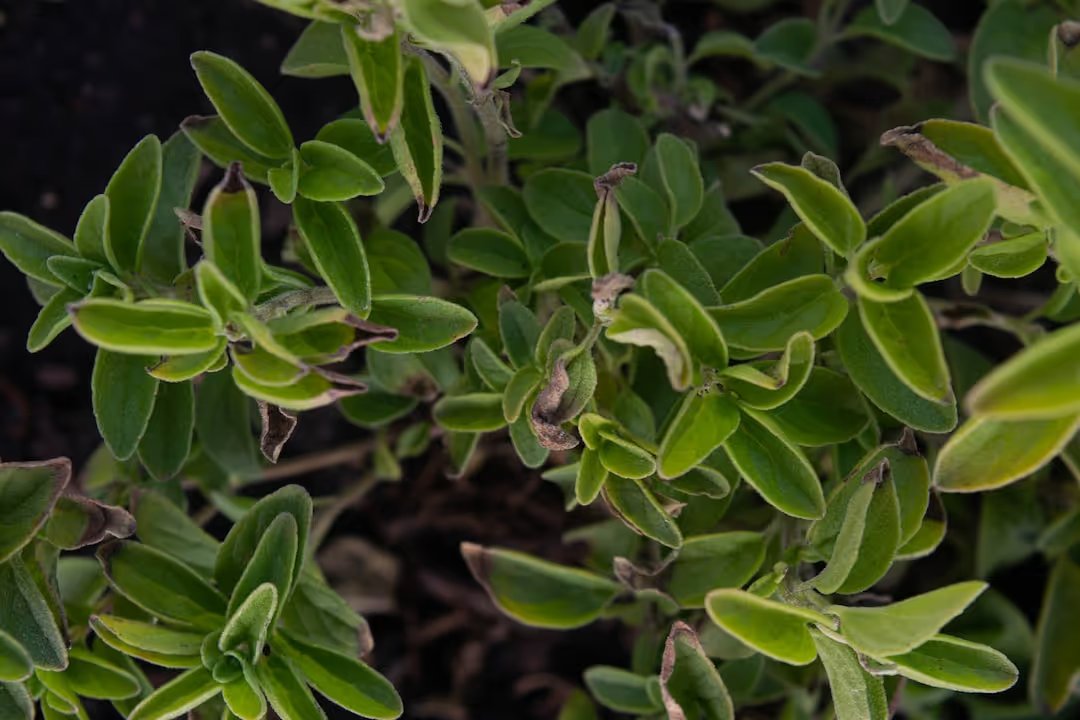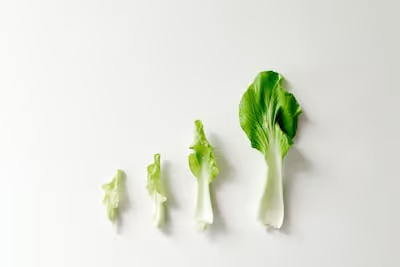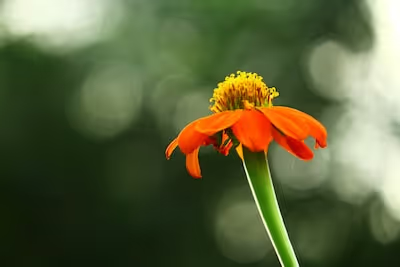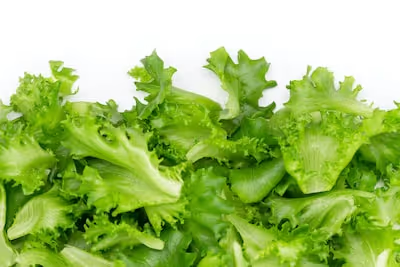Growing Pokeweed: Tips for Planting, Care, and Harvesting

Growing Pokeweed
Growing pokeweed brings vibrant color, pollinator activity, and nutritious berries to gardens, thriving easily in most backyard soils. Sow pokeweed seeds directly outdoors after frost danger passes, ensuring full sun or partial shade exposure. Simple pruning and watering routines keep these bold natives thriving—read on for tips on planting, care, and safe harvesting of this intriguing, edible wild plant.
Cheatsheet: Plant, Grow, and Use Pokeweed Wisely
🌱 Site Selection & Soil Prep
- Sun: Full sun to partial shade
- Soil: Loose, rich, well-drained; pH 5.5–7.2
- Prep: Loosen top 8" (20 cm) soil, mix compost
🪴 Sowing or Transplanting
- Seed: Scarify, sow 1/4" (0.6 cm) deep, early spring
- Spacing: 3' (90 cm) apart
- Transplant: Use garden gloves. Roots fragile; plant without disturbing
💧 Water & Feeding
- Water: Keep moist; tolerate short drought
- Fertilizer: Use compost tea monthly
🌾 Maintenance
- Mulch: Retain moisture, suppress weeds
- Prune: Remove lower leaves, thin crowded stems
- Weed: Control self-seeding relentlessly
- Watch: Rapid growth; up to 10' (3 m) in 1 season
⚠️ Safety & Edibility
- All parts toxic raw. Only young shoots (up to 6"/15 cm) edible after double boiling
- Berries, roots, mature leaves = toxic
- Gloves/long sleeves prevent skin irritation
🗡️ Harvest & Handling
- Harvest window: Late spring, shoots < 6" (15 cm)
- Use: Southern US "poke sallet" tradition (boil 2x, discard water)
- Medicinal use: Never ingest without expert guidance
🛠️ Tools and Products You’ll Need
- Gloves
- Trowel or dibber
- Compost or leaf mold
- Sharp garden knife or scissors
- Buckets for double-boiling shoots
🥦 Health, Nutrition & Self-Sufficiency
- Young shoots: rich in vitamins A, C, minerals
- Foraged poke a traditional food in the American South
- All plant maturity stages: Do not eat raw
📈 Fast Fact
Pokeweed grows wild in 45 US states, often invasively.
Choose a semi-wild spot with sun/part shade; prep soil with compost
Sow scarified seed 1/4" (0.6 cm) deep, 3' (90 cm) apart
Keep moist; mulch ground; pull weeds
Harvest shoots under 6" (15 cm), double-boil if eating
Wear gloves; wash hands/tools after handling plants
-
Growing Pokeweed: Tips for Planting, Care, and Harvesting
I grow pokeweed for its architectural drama, glossy berries, and the mobs of catbirds it attracts. I also respect it, because this native perennial can take over a bed and every part is poisonous.
Know the plant before you plant
Botanical name: Phytolacca americana, a long lived herbaceous perennial with a massive white taproot and purple red stems. Mature height ranges from 6 to 10 feet tall, roughly 1.8 to 3 meters, with a wide, thicket forming crown.
The berries ripen to deep purple and stain like vintage ink, which is part of the charm. Birds feast and spread seed far beyond your fence line.
Is Growing Pokeweed a good idea here
I plant it where I can control it, or I skip it and choose a safer look alike listed below. Check your local guidelines, since some municipalities treat it as a nuisance weed even though it is native in much of the eastern United States.
Kids, pets, and livestock change the calculus fast. I keep it out of play areas and along fence lines animals can reach.
Site and soil
Full sun to part shade works, but fruiting peaks in full sun. It thrives in rich, well drained loam, yet it will shrug in poor soil if you give it space and moisture.
Target a pH between 5.0 and 7.5. I work in 2 to 3 inches, 5 to 8 cm, of compost at planting and skip heavy fertilizer after establishment.
Spacing and containment
Give each plant a 3 to 6 foot, 0.9 to 1.8 meter, berth to show off the candelabra berries. If spread worries you, grow it inside a bottomless stock tank or a large, thick walled container set slightly above grade.
In ground, I install a 12 to 18 inch, 30 to 45 cm, deep root barrier to confine the crown, then mulch to catch self sown seedlings.
Propagation
Seed needs cold to wake up. I sow outdoors in fall or cold stratify for 60 to 90 days at about 40 F, 4 C, then surface sow in spring and keep evenly moist.
Root cuttings also work too well. Any chunk with a bud can regrow, so I avoid moving soil from established patches.
Planting steps that have never failed me
- Direct sow pods in late fall, then thin to the best seedling in spring.
- For transplants, set crowns so the root flare is at soil level, water deeply, then mulch 2 inches, 5 cm, but keep mulch off stems.
- Stake in windy sites. The hollow stems can kink in summer storms.
Water and feeding
First year, I water weekly during dry spells, about 1 inch, 2.5 cm. After that, it rides out heat with only an occasional soak in drought.
Skip nitrogen heavy fertilizers that push floppy growth. A spring topdress of compost is plenty.
Pruning and seasonal care
I pinch the tips at 24 inches, 60 cm, to encourage branching and a denser berry show. Deadhead to prevent volunteer forests unless you are feeding birds at scale.
After frost, cut stems to the ground and bag them. I never compost fruits or roots, since seeds survive and roots can re sprout.
Invasiveness and seed load
Pokeweed is prolific. I remove green berries if I am growing for foliage, and I bag ripened fruit if I need to limit spread beyond my fence.
“A single pokeweed plant can produce 1,100 to 7,000 seeds.” — Penn State Extension
Those seeds can persist in the soil seed bank for years. Disturbance invites a flush, so I weed gently and mulch well.
Safety and toxicity
All parts are poisonous, and the root and mature leaves pack the biggest punch. I use gloves, long sleeves, and eye protection, and I wash hands after handling sap or berries.
Symptoms of ingestion can include nausea, vomiting, diarrhea, cramps, and more severe effects at higher doses. In the United States, call Poison Control at 1 800 222 1222 for guidance.
“All parts of pokeweed are toxic to humans and many mammals.” — USDA NRCS Plant Guide
Harvesting, the safe ways I practice
For natural dye, I snip ripe berries into a dedicated bucket in late summer and early fall. The juice stains permanently, so I use tools and clothing I will not cry over.
For ornamental stems, I cut when half the berries have colored and condition the stems overnight in cool water. Keep arrangements away from children and pets.
For wildlife support, I let clusters ripen, then thin fruit on lower branches to limit ground drop and seedlings. I rake up fallen berries after feeding frenzies to reduce surprises next spring.
Some traditions mention eating young shoots as poke sallet. Public health and extension sources advise against consuming any part of the plant due to poisoning risk, so I do not teach or endorse that practice.
Problems I actually see
Disease rarely troubles pokeweed in airy sites with decent drainage. Waterlogged soil invites root rot and broken stems, so I plant high and avoid low spots.
Deer browse early growth in lean times, then lose interest as toxins concentrate. Rabbits usually pass it by.
Design notes from the back forty
I position pokeweed behind Panicum, switchgrass, which catches the berry clusters in a soft net. The magenta peduncles punch against silver foliage like lamb’s ear or little bluestem.
Avoid patio edges and laundry lines. One berry underfoot tracks a purple crime scene across stone.
Tools and products that help
- Long cuff nitrile gloves and eye protection for sap and stain control.
- A deep digging spade with a narrow blade for taproot removal and division.
- Heavy contractor bags for fruit and stem disposal.
- Landscape root barrier panels if you need to corral a clump near a border.
- If removal is the goal, a cut stump treatment with a systemic brush killer applied immediately after cutting can be effective where allowed. Follow your local label and regulations.
Top alternatives if you like the vibe but want fewer headaches
- American beautyberry, Callicarpa americana, for purple fruit that birds adore and easier manners.
- Black chokeberry, Aronia melanocarpa, for glossy black fruit and stellar fall color.
- Common elderberry, Sambucus canadensis, for wildlife value and flowers for syrup, with proper processing guidance from extension sources.
- Joe pye weed, Eutrochium purpureum, for height and pollinator traffic without poisonous fruit.
- Staghorn sumac, Rhus typhina, for bold structure and red fruiting panicles on a sunnier slope.
FAQs gardeners ask me
Will it grow in containers. Yes, in a 20 to 30 gallon, 75 to 115 liter, pot with sturdy staking and weekly water in summer.
Can I move a mature plant. You can, but you will leave pieces of root that resprout, so expect satellites next year where it stood.
How do I keep it from spreading. Deadhead, bag fruit, maintain a deep mulch, and patrol for seedlings monthly from spring through fall.
Is it legal to plant. Check your city or county weed ordinances and any state lists of invasive or nuisance plants before you buy or transplant.
My quick calendar
- Late winter: Cut to ground, refresh mulch, repair barriers.
- Spring: Direct sow or transplant, stake, pinch at 24 inches, 60 cm.
- Summer: Deep water in drought, deadhead or bag fruit per your plan.
- Fall: Harvest berries for dye or wildlife, clean up drops, bag stems.
Quoted and referenced sources
- USDA NRCS, Plant Guide: Phytolacca americana. Toxicity, growth habit, wildlife notes.
- Penn State Extension, Pokeweed. Seed production estimates, control recommendations.
- NC State Extension, Plants Database: Phytolacca americana. Size, toxicity, horticultural details.
- American Association of Poison Control Centers, Poison Help line: 1 800 222 1222. Emergency guidance for exposures.
Frequently Asked Questions about Growing Pokeweed
When is the best time to plant pokeweed?
For optimal results, plant pokeweed seeds or young seedlings in early spring, when the earth wakes and frost no longer threatens their tender shoots. Timing your planting to the return of warmer days ensures vigorous growth and abundant harvest.
What soil conditions encourage healthy pokeweed?
Pokeweed flourishes in fertile, well-draining soil, rich in organic matter. Sustain your pokeweed with compost or aged manure, enhancing its vibrant vigor and deep-rooting tendencies. Give it room to stretch and breathe—avoid crowding.
How should I water my pokeweed plants?
Water regularly yet sparingly, allowing the soil to dry slightly between sessions. Overwatering invites unwanted problems, but consistent, moderate moisture strengthens your pokeweed's resilience and helps form those signature, plump berries.
Does pokeweed require pruning?
Prune judiciously to remove damaged stems or limit plant size if desired. Careful trimming in late winter or very early spring invigorates fresh growth and maintains optimal structure for healthier yields.
When and how do I safely harvest pokeweed?
Harvest young leaves and shoots carefully in spring, as they're tender and suitable for cooking after proper boiling. Berries, though intriguing, remain toxic and unsuitable for culinary adventures—handle with mindful caution and protective gloves.
Are there common pests or diseases in pokeweed cultivation?
Pokeweed remains robustly resistant to many gardening troubles. Aphids occasionally gather on tender new growth. Manual removal or a gentle spray of insecticidal soap keeps infestations minimal and ensures your plants thrive undisturbed.
Growing pokeweed means working with a plant that's wild, stubborn, and surprisingly beautiful. Treat it with respect—it’s toxic if mishandled, but with care, it rewards you with bold foliage and, for the well-versed forager, edible shoots in spring. Give it full sun, lean soil, and enough space; pokeweed gets downright massive. Stay on top of unwanted spread by removing berries before they drop. If you’re passionate about native edibles like greenbrier, pokeweed fits right in—sometimes unruly, always authentic. Grow it for its looks, its legacy, or for a little wild flavor—just know what you’re getting into, and don’t cut corners on safety. That’s the real lesson in cultivating pokeweed.
The Homesteader's Take on Cultivating Pokeweed
Maximize Nutritional Benefits
- Rich Nutrients: Young pokeweed shoots and leaves deliver iron, potassium, calcium, vitamin A, and vitamin C for robust self-sufficient diets.
- Safety First: Boil young greens twice, discarding water each time, to effectively remove toxins.
- Seasonal Timing: Harvest shoots early spring when under 15 cm (6 inches) for lowest toxin levels and optimal taste.
Extending Shelf Life through Preservation
- Blanch and Freeze: Briefly boil prepared greens, immediately plunge in ice water, thoroughly drain; freeze small portions to preserve nutritional value.
- Drying Seeds for Herbal Remedies: Harvest mature berries in late summer; dry in well-ventilated area out of direct sun; store in airtight containers for medicinal tinctures.
Integrating Pokeweed in Self-Reliant Garden Systems
- Pollinator Friend: Flowers attract beneficial pollinators supporting diverse home gardens and increasing yields.
- Feed for Poultry: Supplement poultry feed with berries (limited quantities) to boost vitamin intake naturally; caution required due to seeds' toxicity.
- Natural Dye Source: Extract beautiful magenta pigment from mature berries for homemade textile dyeing, reducing purchased products.
Management and Sustainability
- Contain Growth: Plant pokeweed in dedicated beds or large containers to restrict unwanted spreading by roots or seeds.
- Resource Conservation: Use drought-tolerant pokeweed plants to minimize irrigation needs in sustainable gardening efforts.
Find out which plants will thrive in your garden!
Answer a few fun questions and get custom plant recommendations perfect for your space. Let’s grow something amazing together!

start your season





